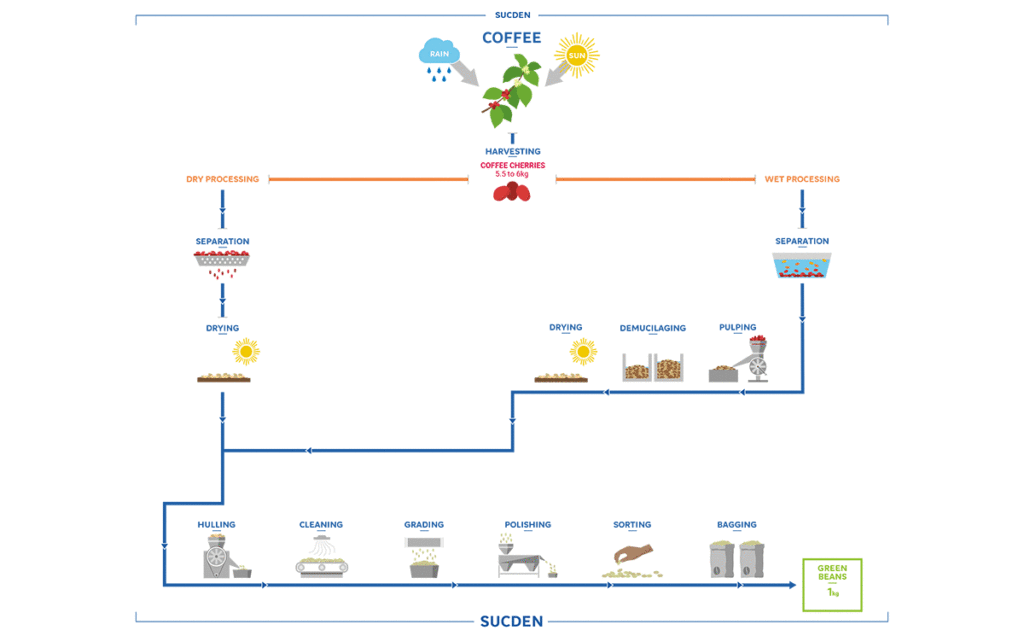Process Flowchart
From a seedling, it takes three or four years before a young coffee tree bears fruit. Known as a coffee cherry, the fruit turns bright red when it is ready to be harvested. Coffee plantations in Brazil tend to be on flat land and so harvesting is nowadays mechanized. However, in most other coffee growing countries, plantations are on hills and harvesting is mainly by hand.
From seed to bean

Depending on the country and farming tradition, ripe coffee cherries are processed using a dry or wet method.
Dry processing
This is an age-old method that involves sun drying the coffee cherries on the farm. The mucilage, which is the sugary substance around the bean, ferments during drying and leaks flavor into the bean. When dry, the cherry skins are removed using a ‘hulling’ process.
Wet processing
Ripe coffee cherries are initially sorted, cleaned and mechanically pulped so that just the sugary mucilage is left on the bean. They are then placed in a fermentation tank where flavor from the mucilage seeps into the bean. After one or two days the beans are washed and dried.
Each process results in dried beans known collectively as ‘parchment coffee’. They are hulled, graded, polished and hand sorted to ensure that only the best are sold into the global market.
With processing complete, the beans are stored in jute or sisal bags, or bulked in lined containers, for shipping around the world. At this stage it is known as ‘green coffee’.
Finally, the coffee is roasted and ground according to the intended use.
